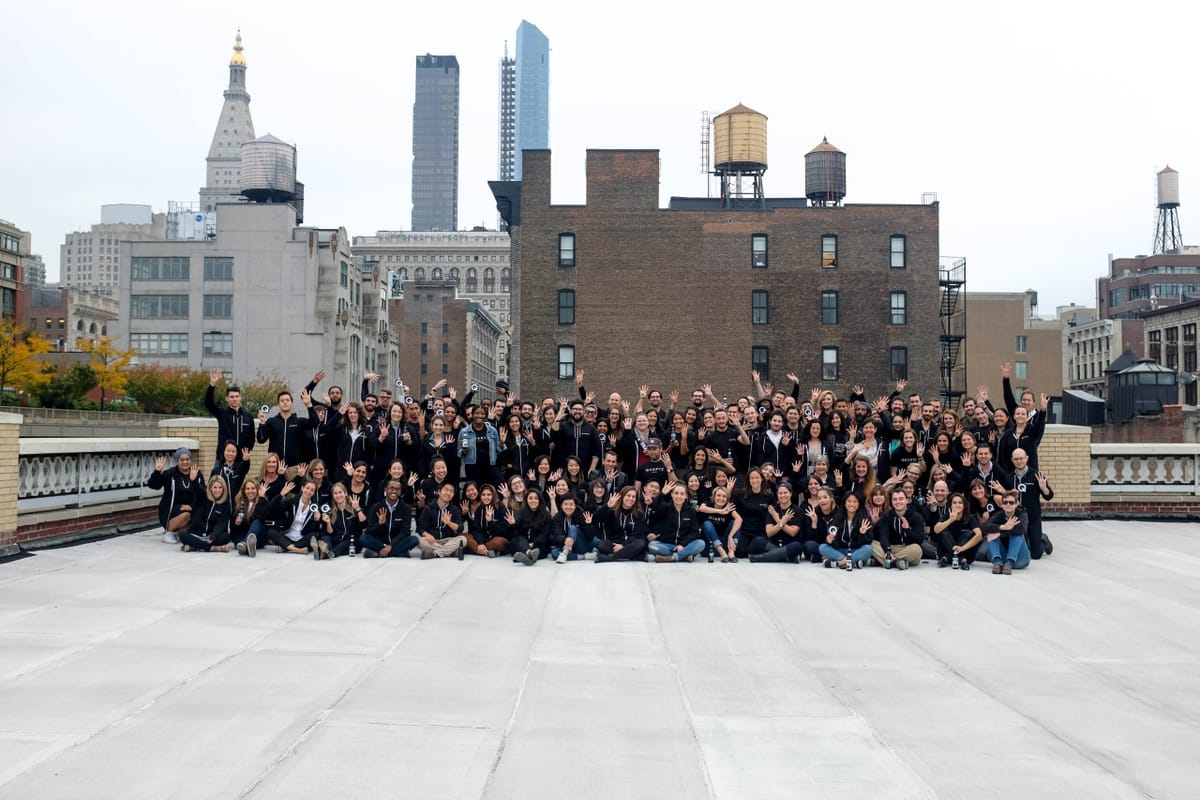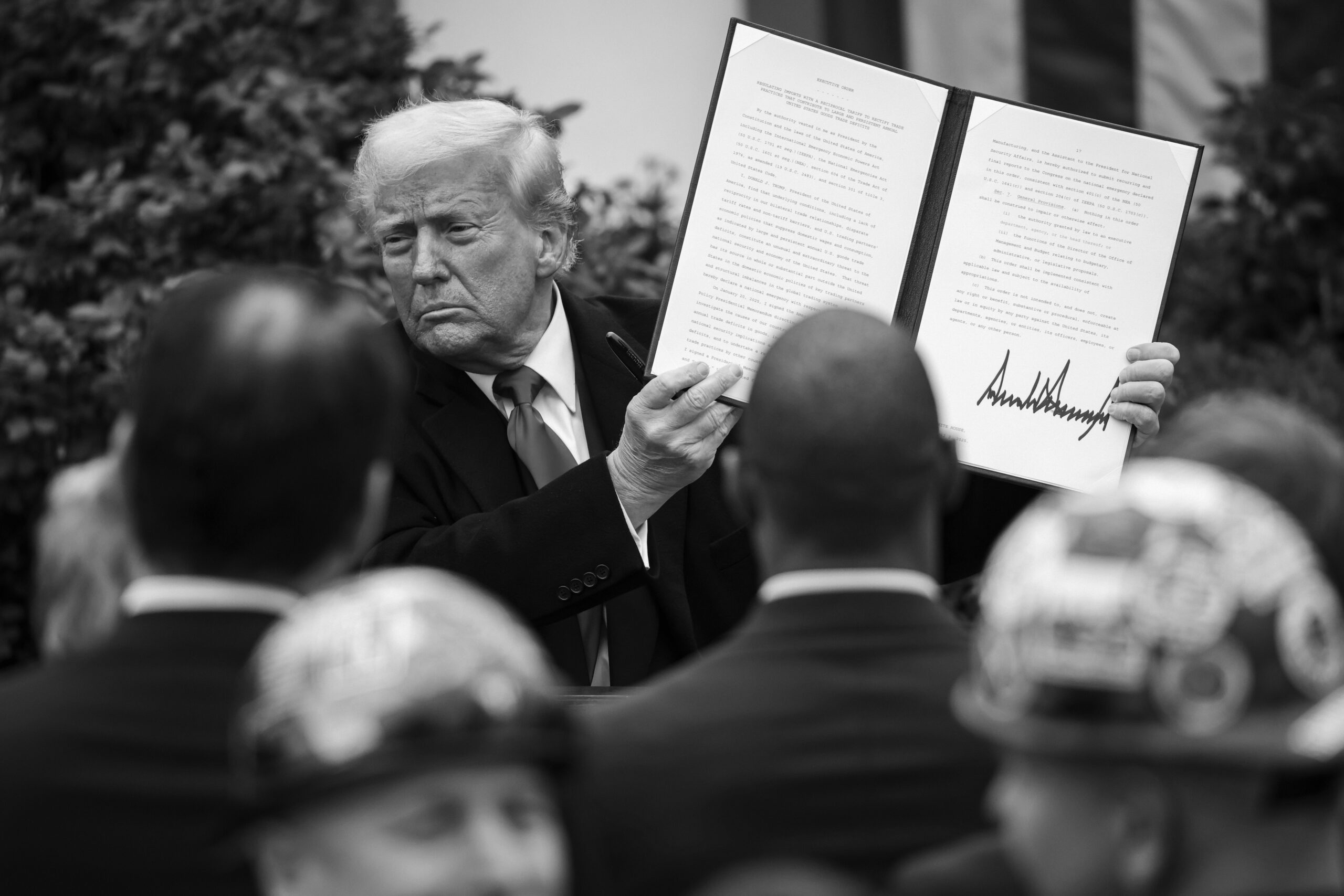As President Trump’s tariffs dominate the news cycle and ripple through the U.S. economy, driving stock prices down, one sector has remained conspicuously silent: the gun industry. Recent social media posts and press releases from major gun makers and the National Shooting Sports Foundation (NSSF), the gun industry’s trade association, make no mention of the tariffs or their potential to drive up firearm prices, impacting American gun owners. When asked about the tariffs by a journalist, the NSSF simply punted, saying, “We do not have any data on the impact of the tariffs at this time.”
This response stands in stark contrast to trade groups like the U.S. Chamber of Commerce, Consumer Technology Association, and National Association of Manufacturers, which have publicly denounced the tariffs as harmful to the economy.
Tariffs: A TAX ON RAW MATERIALS
On March 12, Trump’s tariffs on steel and aluminum — metals used to produce key firearm components — went into effect, placing additional pressure on the firearms industry at a time when gun sales are dropping. As we wrote a month earlier, such tariffs raise the specter of gun price hikes, and the latest tariff announcements present new costs for gun makers in terms of raw materials, which will hurt downstream customers. Basic economic theory tells us that when the costs of raw materials rise, the prices of finished products inevitably follow suit.
Raw material costs and availability play a crucial role in gun manufacturing. When Chris Killoy, then-CEO of Ruger, discussed the impact of raw material costs during a fourth-quarter 2023 earnings call, he named “steel, aluminum,” and even “wood” as key commodities, noting that difficulty in securing favorable pricing “negatively impacts profitability or impacts the price of the firearm going out the door.”
During the first Trump administration, Killoy noted that steel tariffs had increased demand for domestic steel, leading “to some price increases and some shortages of raw materials.” James Debney, then-CEO of American Outdoor Brands, the parent company of Smith & Wesson at the time, noted that the 2019 U.S.-China trade dispute had squeezed the company’s bottom line, stating, As the tariff situation continues to escalate, opportunities to offset that impact have begun to rapidly diminish.” His company ultimately slashed its earnings guidance for the rest of that fiscal year, warning investors of a $5 million hit to earnings due to tariff costs.
Fast-forward to 2025, and the silence is deafening. As of this writing, major gun manufacturers and the NSSF have yet to provide any commentary on the Trump administration’s tariffs, despite the fact that they will likely increase costs for American gun owners. Even the National Rifle Association, which is often quick to rally its base about purported threats to gun owners, has stayed silent. No grand public outcry, no rallying cry from the leaders who claim to represent the best interests of their loyal customers. It’s as if the gun industry and its backers hope this issue will quietly vanish if they simply keep their heads down.
firearms imported from europe
In addition to hikes in the cost of key raw materials, foreign importers of guns and ammunition are also facing hefty new tariffs. The European Union, for instance, now faces a 20-percent tariff on firearms, which will hit companies like Beretta in Italy, Fabrique Nationale (FN) in Belgium, Glock in Austria, Heckler & Koch in Germany, and Springfield Armory, which is the exclusive U.S. importer of Croatian HS Produkt pistols.
Meanwhile, Brazilian imports are being hit with a new 10-percent tariff, which could raise the prices of Taurus firearms, and the announced 10-percent tariff on Turkish imports could raise prices for a number of pistols and shotguns made by companies like ATA Arms Armsan, Canik, Girsan, Kral Arms, Sarsilmaz, and Stoeger Industries, among many others. Other gun makers that may be affected by the tariff on Turkish imports include CZ-USA, Weatherby, and Winchester, which have various product lines manufactured in Turkey.
Additionally, many firearm accessories, such as optics, are made in China, which is now facing a 34-percent tariff. Again, this will ultimately push prices higher for American consumers, and U.S. gun manufacturers looking to export their products will likely face hostile reciprocal tariffs.
So, why the silence? The answer is clear: The gun industry doesn’t want to alienate the Trump administration, with whom it’s hoping to maintain favorable relations in the years ahead.
This timidity on the part of the gun industry leaves American gun owners holding the bag — and serves as yet another reminder that the gun industry isn’t standing up for gun owners. It’s simply playing politics and advancing its own agenda.





